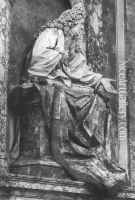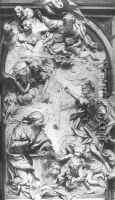Bernardino Cametti Paintings
Bernardino Cametti was an Italian sculptor of the late Baroque period, born in 1669 in Rome, Italy. His work reflects the transitional period in European art between the high drama of the Baroque and the more refined, classical influence of the emerging Rococo style. Cametti was a pupil of the renowned sculptor Ercole Ferrata and also closely associated with another significant figure of the time, Giovanni Battista Maini. His training under such masters provided him with a solid foundation in the techniques and themes popular in late 17th and early 18th-century sculpture.
Cametti is known for his religious sculptures, which adorn many churches in Rome, as well as his funerary monuments. One of his most notable works is the monument to Pope Clement XI, located in the Church of Santa Maria sopra Minerva in Rome. This work showcases his ability to combine architectural elements with sculptural figures to create a harmonious and expressive whole, illustrating the solemnity and spirituality expected of religious art of the period.
Throughout his career, Cametti developed a style that, while rooted in the Baroque tradition, anticipated the softer contours and playful themes of the Rococo. His sculptures often featured gentle expressions, delicate drapery, and a sense of movement that seemed to breathe life into marble. Despite his talent and contributions to the Italian sculptural scene, Bernardino Cametti remains a somewhat lesser-known figure compared to his contemporaries. He passed away in 1736 in Rome, leaving behind a legacy of work that continues to be studied and admired for its craft and transitional significance in the history of art.

